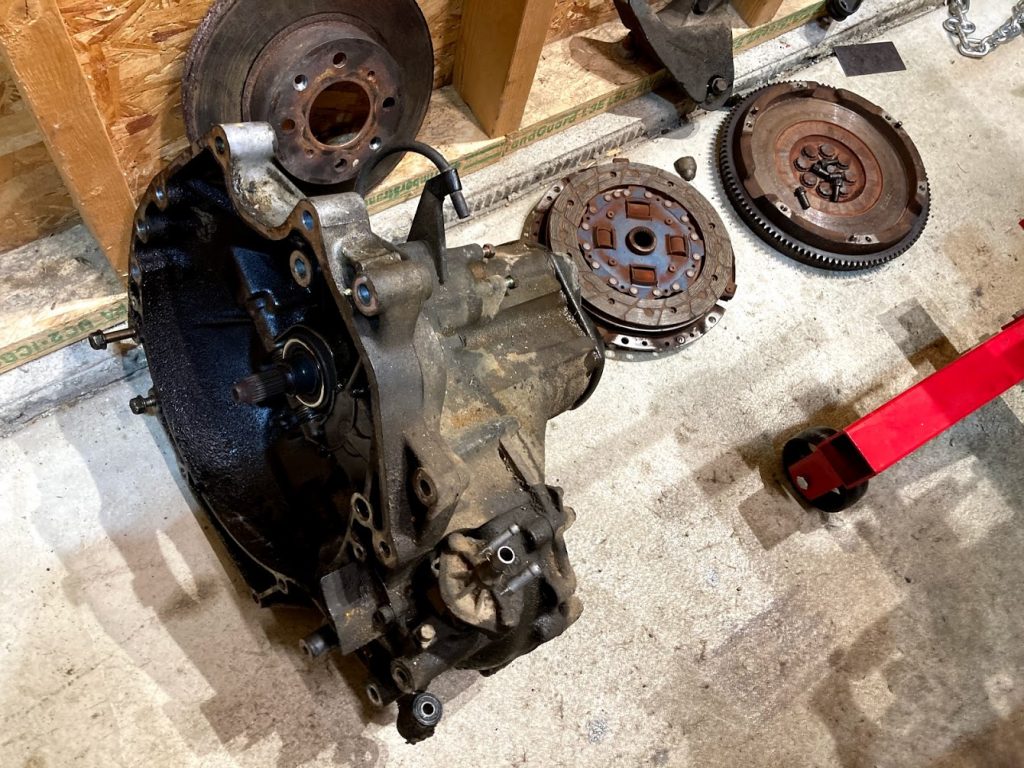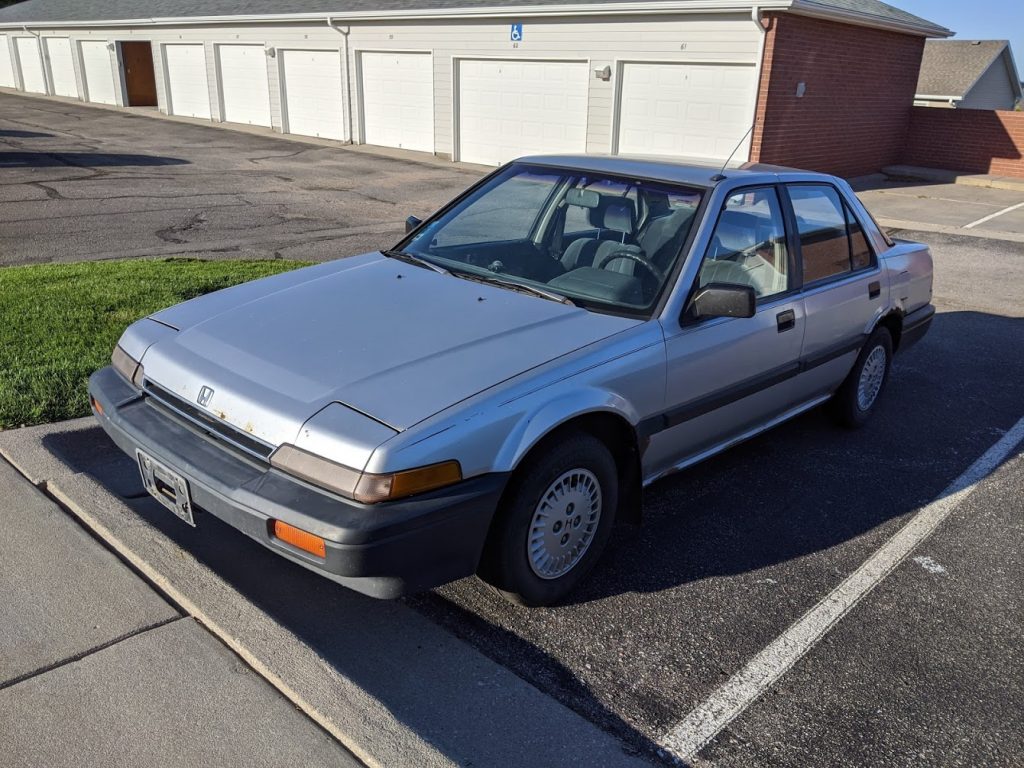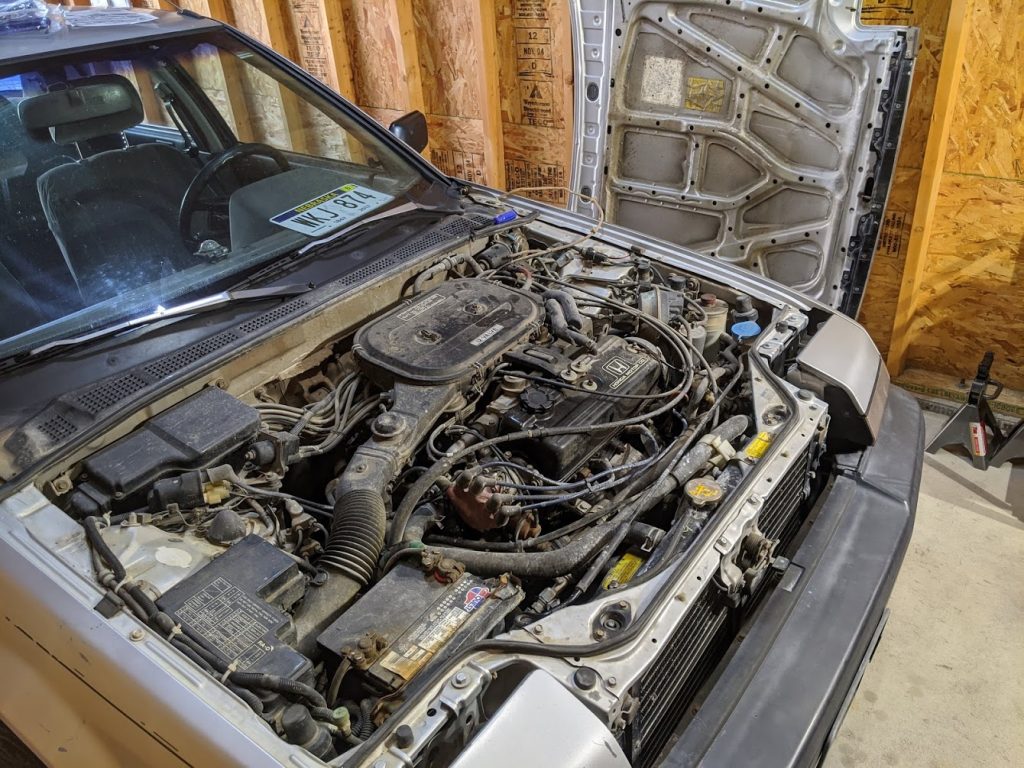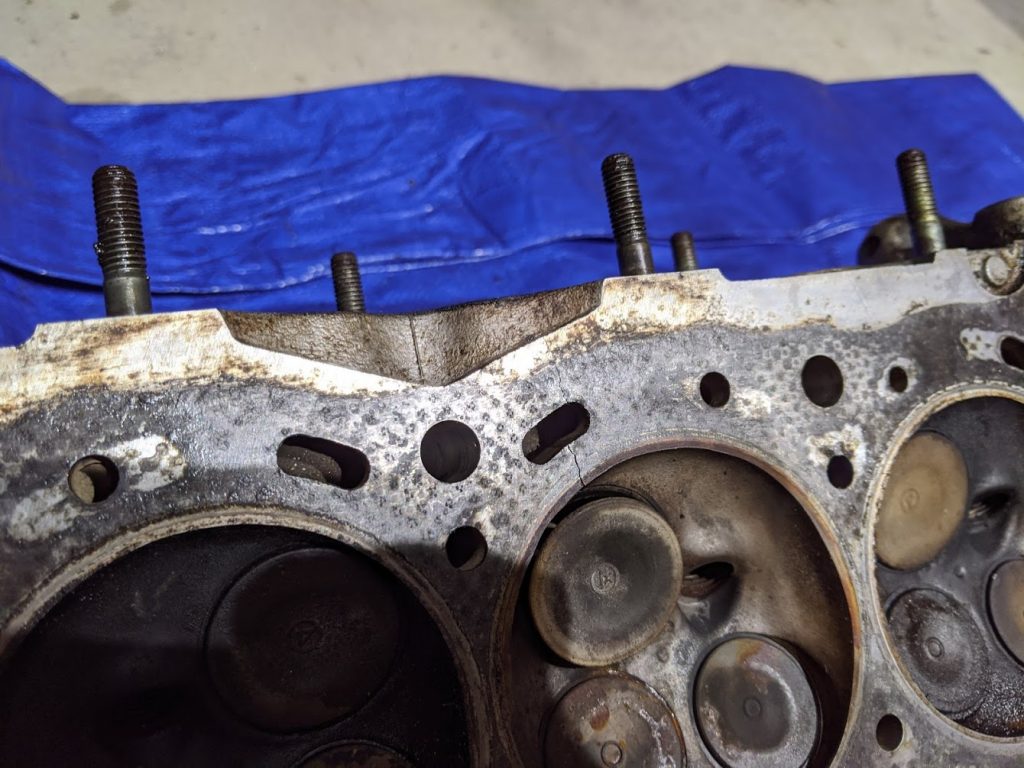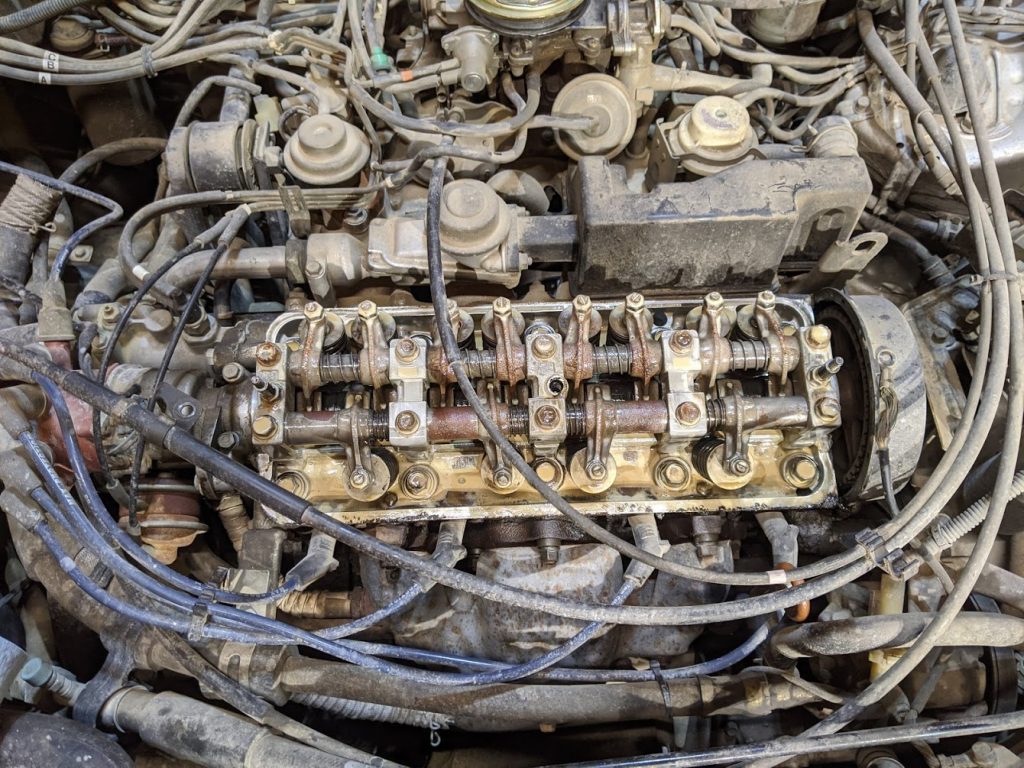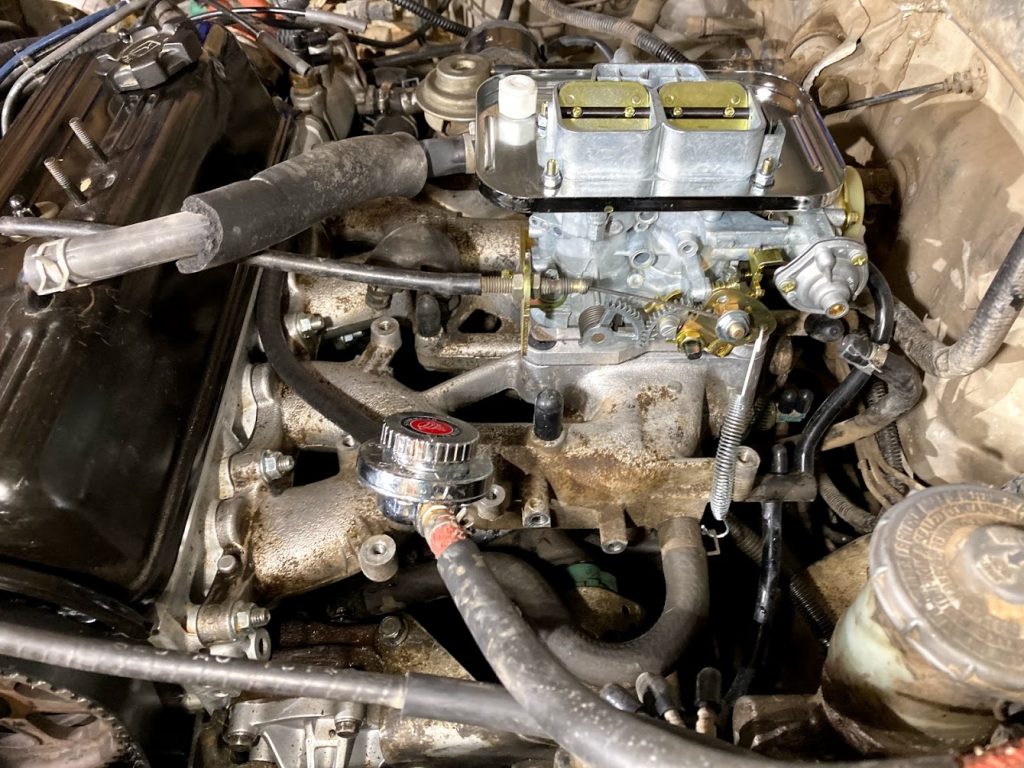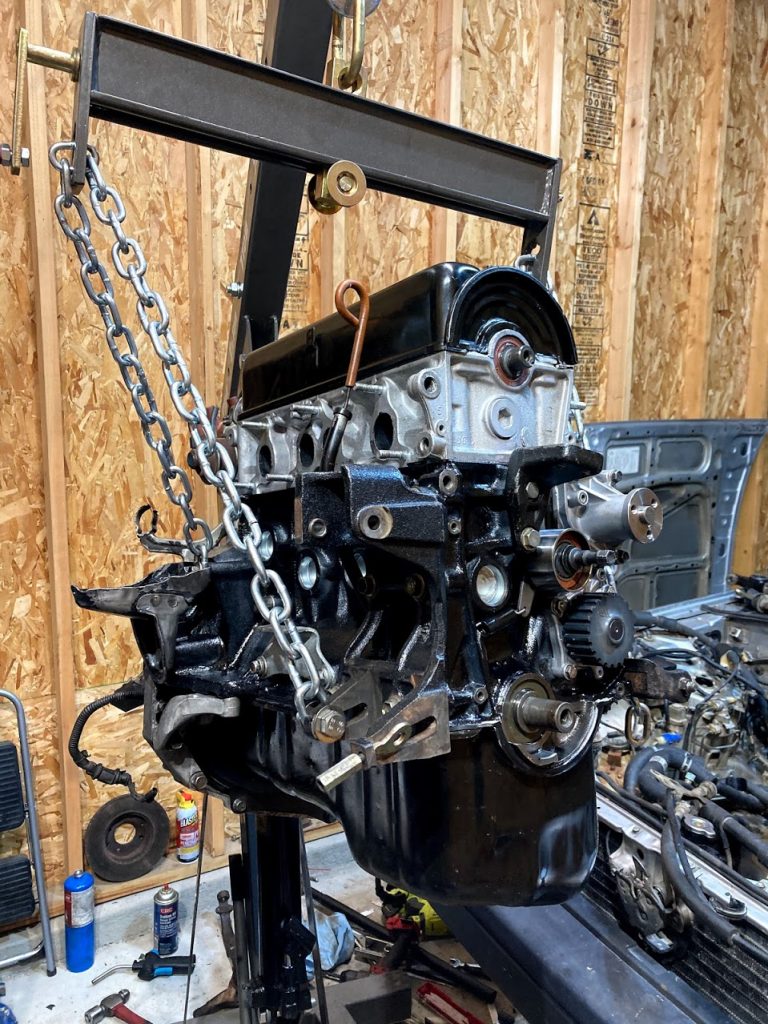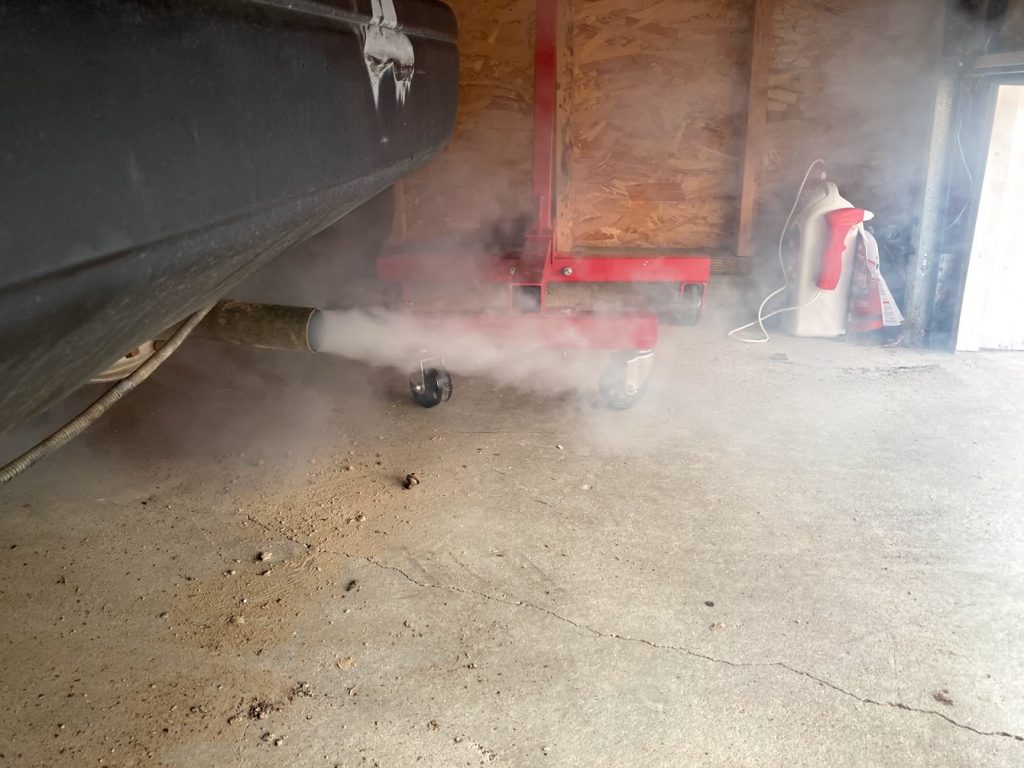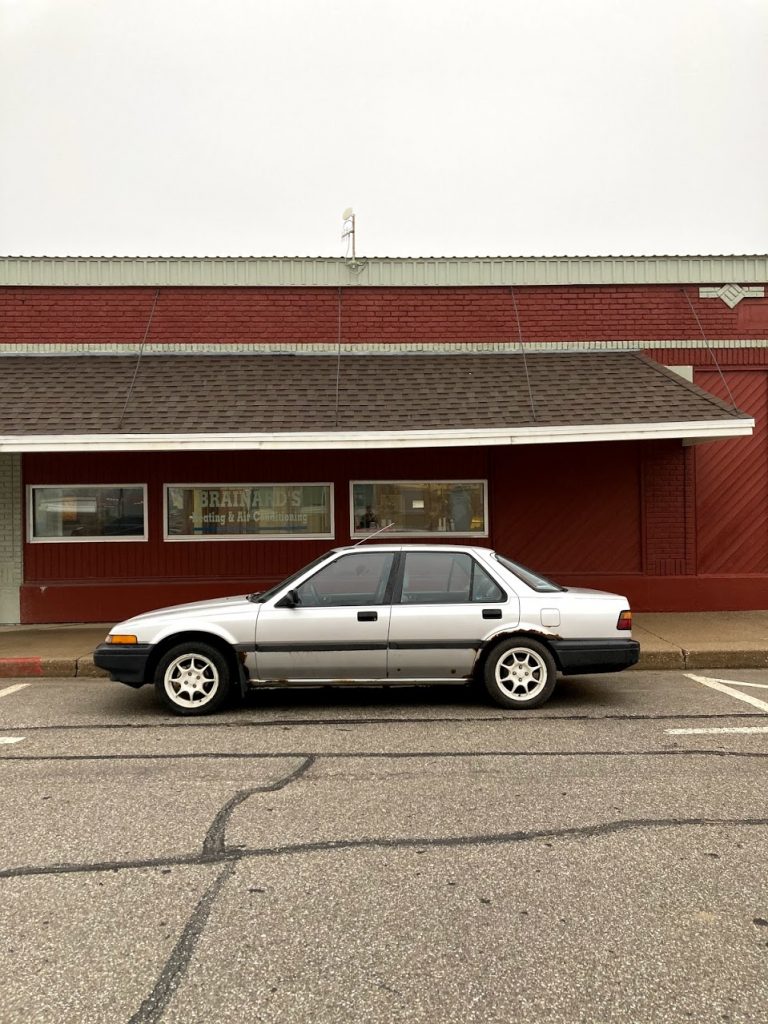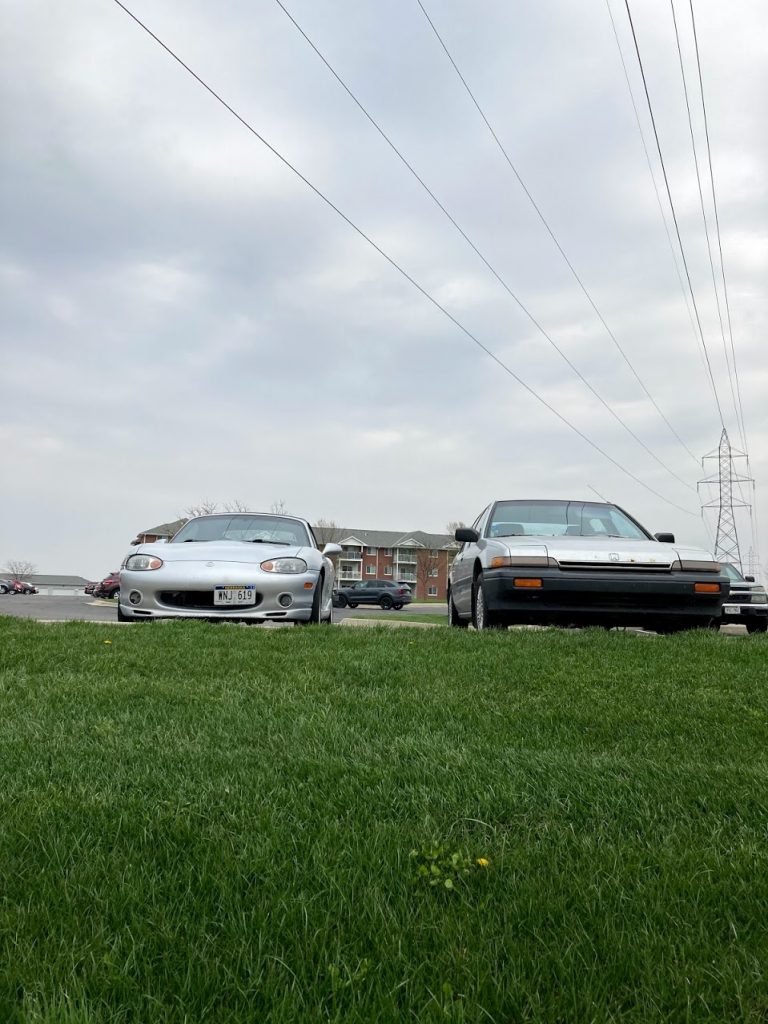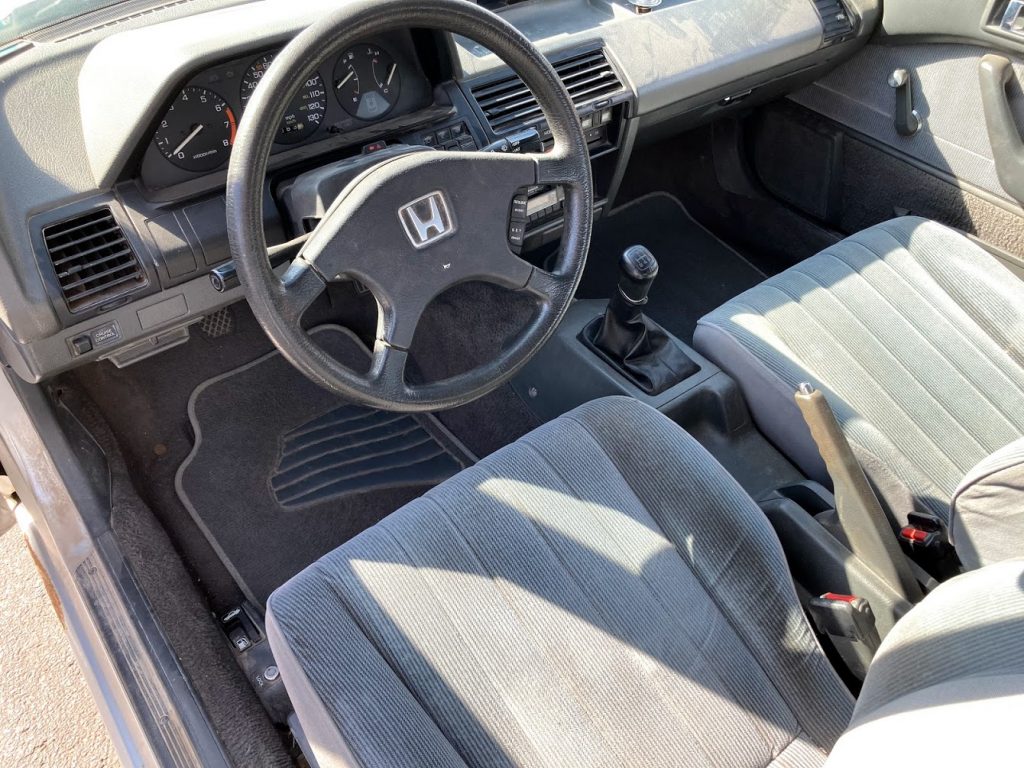Ten months with a 3rd Generation Honda Accord
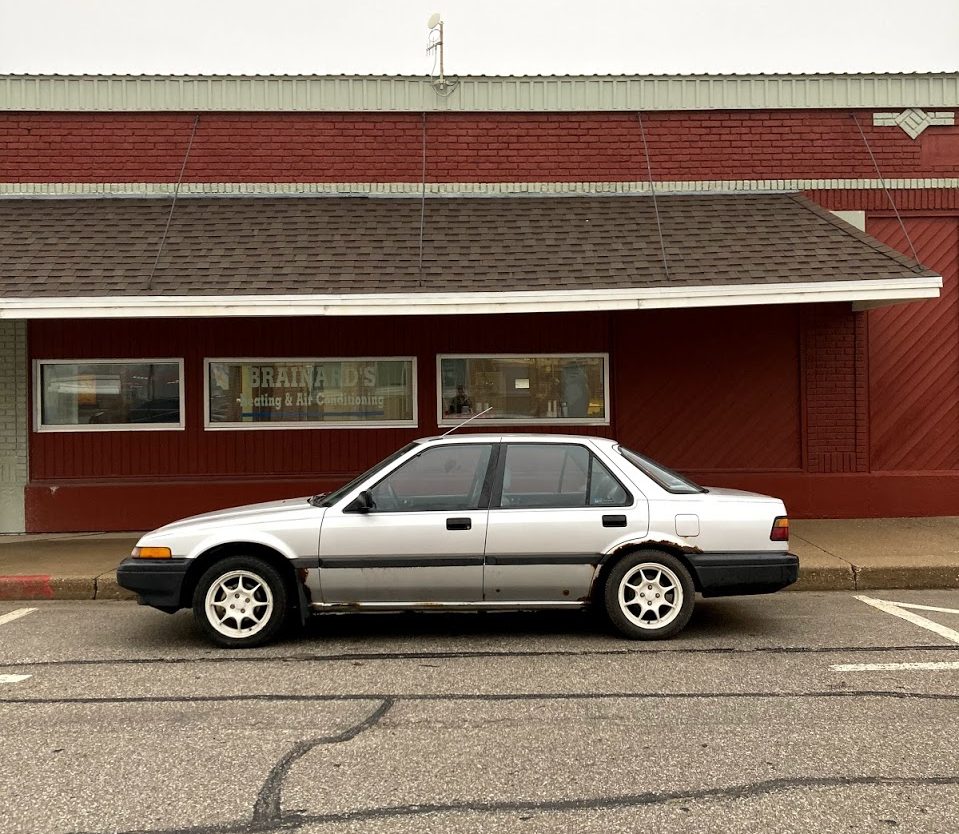
I have a lot of work in progress posts for video game console modding topics, but I thought I’d go ahead and share an unrelated project I worked on last year. Expecially considering that my last post was nearly a year ago (I’m still alive, and the store section on this website is still active). That project is a 3rd generation Honda Accord, a 1987 model year car in particular.
The search for a project car
I have always been interested in cars and spent a lot of time when I was younger playing car racing video games. A project car to tinker on was on my mind, but it wasn’t until I moved out on my own in 2019 that I even really had the opportunity to purchase a project car of my own. I already had a reliable daily driver that didn’t need tinkering, and also didn’t have the garage space living with my parents.
A year of living alone had passed, and I had a little more free time each day because I was working from home instead of driving to and from work each day. Combine the extra time with a $1,200 stimulus check signed by Donald Trump I thought it would be a good time to purchase a project car.
My goal was to find a cheap manual transmission car in the $500 range. At this price point you’re looking at cars with serious problems. Terminal rust, blown motors, and missing transmissions are just some of the types of problems you see looking for cheap vehicles on Craigslist and Facebook Marketplace. I wanted a manual transmission because I wanted to learn how to drive one so that I could buy a more expensive manual car in the future and not have to worry about doing any damage to it.
There were surprisingly few cars that matched my criteria of around $500 with a manual transmission and minimal rust. In late June 2020 I saw what looked like a fairly clean 1987 Honda Accord listed for sale on Craigslist which looked like a great project car.
3rd generation Honda Accord overview
Starting in the 1970’s and continuing into the 90’s Honda was really doing everything right in their push into the United States market. They were making great well build reliable small cars that were also affordable. One of their most successful models in this time period was the Honda Accord.
In 1985 the 3rd generation Honda Accord was released for the 1986 model year. It was a compact car available in sedan, coupe, and hatchback body styles (as well as a wagon outside of the United States). Unlike modern Accords it’s actually a very small car, significantly smaller in size than the 10th generation Civic. While it is a small car it really doesn’t feel all that small, especially in the front seats which have plenty of room.
When you take a look at the 3rd generation Honda Accord you will see a very 80’s design. It has a fairly simple boxy design, with popup headlights. I personally think it is one of the best looking Accords along with the 4th generation Honda Accord. While it does look dated, it really isn’t dated in a bad way. It helps that it doesn’t really look like anything you see on the road today.
Mechanically the 3rd generation Accord is a fairly typical Honda for the time. It has double wishbone suspension and disc brakes in the front, along with drum brakes in the back.
In the United States it was available with a 2L iron block, aluminum 12-valve SOHC head, engine that is under the Honda A20A series. It was available with electronic fuel injection in LX-I, EX-I, and SE-I trims, or a carburetor in DX and LX trims. These engines were paired with either a 4-speed automatic transmission, or a 5-speed manual transmission.
Purchasing a 3rd generation Honda Accord
When I saw the 1987 Honda Accord listed for sale on Craigslist I knew I had to at least take a look at it. It was nearby, just outside of Waverly, Nebraska so I was able to easily take a look at it after work one day.
When I first saw the car I really liked it. It had a super clean interior, not a ton of rust, and a 5 speed transmission. So if I were to fix the car and make it reliable it would be a pretty nice fun car to drive around.
The owner was able to start up the car and show that it would at least start up and run, and move under its own power, which made me feel comfortable buying it in that $500 price range as a project. The car had always been in his family since new, and he said it wasn’t keeping the coolant in the cooling system and because of that was overheating.
One clue as to the issue that was very obvious was that there was probably an issue with the head gasket. The oil had a very nice chocolate milk color, which is what happens when oil and coolant mix.
To an inexperienced mechanic like myself at the time that seemed like a simple fix. Swap the head gasket, and maybe just replace most of the cooling system (radiator, hoses, gaskets, water pump, thermostat) just to be safe and that should be it.
He offered to deliver the car on a trailer, so I ended up purchasing it.
It wasn’t just a head gasket
Within about a week of wrenching on the car I was able to get the head off of the vehicle. It was a decent amount of work for an inexperienced mechanic since I had to remove both the intake and exhaust manifolds, which of course had some hard to reach nuts, among removing other things.
Little did I know that I’d have that head off several times over the following year. Now that I’ve done it a few times the head is actually pretty easy to get off in just a few hours.
After getting the head off of the engine I was able to see a fairly obvious crack on the surface of the head. It was going between the cylinder bore and one of the coolant ports, right next to the exhaust valve on cylinder two.
I ended up purchasing a remanufactured head so that I could put back together the engine without having a cracked head. It cost some money, but I’d still be into the car for not that much money if it resulted in a nice working car.
More chocolate milk colored oil
About a month later I had fully put back together the car with a lot of nice new replacement parts.
- Remanufactured cylinder head
- Head gasket
- Water pump
- Timing belt
- Radiator
- Coolant hoses
- Spark plugs
- Spark plug wires
- Various gaskets and seals
I was excited to fire the car back up and have a completed project, but that’s not what happened. Immediately after starting the car there was a lot of smoke coming out the exhaust. Maybe coolant, or maybe just leftover oil from when I lubricated the cylinder walls while it was taken apart.
Either way that didn’t really matter because I noticed that the new oil turned into chocolate milk colored oil pretty quickly, and also noticed an oil leak coming from either the oil pump or the front main seal.
I ended up taking it all apart again, and this time using ARP head studs and being extra careful when putting the head back on. Sadly even after redoing all of the work I had the same results: exhaust smoke and coolant in the oil.
Where is that coolant coming from?
So at that point I knew coolant was getting into the system somehow. If it wasn’t coming through the head gasket or head then it was probably either coming from a cracked block, or through the intake manifold or carburetor (which both had coolant going through it).
I decided I was going to replace the carburetor with a Weber 38 kit, eliminate all coolant flow through the head, and remove all unnecessary vacuum lines. It would be cleaner, easier to work on, and easier to tune.
After doing all of that work the engine still ran, but it had the same smoking and oil coolant mix issues that it had before. I probably should have just abandoned the project at this point, but I decided to continue with it.
Engine rebuild time
One of the things that I knew about the engine part way through the process was that the compression was fairly low (near the bottom end of the minimum acceptable number in the shop manual), and that there was a decent amount of leakage. I figured I might as well take the engine out of the car, take a good look at everything, rebuild it, and see if that helps.
It took me around two months to do, but I was able to rebuild the engine over the winter. Here’s all that I did while it was apart.
- Deep cleaning and electrolysis to remove rust
- Hone cylinder walls
- Replace pistons
- Paint engine block
- Replace piston rings
- New freeze plugs
- Replace main, rod, and thrust bearings
- New gaskets, and seals
- Replace oil pump
Those are all of the things I did to the engine itself. While I was in there everything seemed to check out. I didn’t notice any cracks, and all of the measurements seemed to be within spec. Putting everything together outside of the car also allowed me to really clean everything and make sure I got a good head gasket seal.
Of course I ended up doing other things while everything was out of the engine bay. Things like replacing the clutch and flywheel, new suspension and brake parts, and new axles.
More exhaust smoke
Once I had everything assembled and back in the car I was able to finally turn on the car and see if my issues were resolved. The results were mixed, on one hand it fired right up and ran perfectly, on the other hand there was a ton of exhaust smoke, even more than before.
There was a ton of oil in the engine due to all of the oil I used to lubricate the pistons and rings going in, and the cylinder walls while assembling. I figured the smoke must just be all of the oil burning off of the car, and proceeded to let the car run.
It ended up being seemingly successful. Eventually the smoke stopped, the car didn’t overheat, the compression was improved significantly, and the oil wasn’t mixing with the coolant.
Driving the 3rd generation Accord for a month
Now that I had an Accord that wasn’t mixing oil and coolant I was able to drive it around some more. It wasn’t perfect, and typically smoked for a little bit at startup, but it was drivable and wasn’t overheating.
For about a month I was able to drive around the Accord and really get to enjoy it. I didn’t take it on any long trips or anything, but could drive it to work, or to the grocery store, or just around town.
Over the month I was able to learn how to drive the manual transmission smoothly and ended up becoming comfortable with the car. I really liked how the car handled in a very tight and direct way, while also being a very smooth riding car even over rough pavement.
As a whole the Accord had a directness that most modern cars don’t have. It has hydraulic power steering instead of electronic power steering, so you can actually feel the road. A manual transmission and cable operated clutch allow you to have a better connection with the car. It also has a direct cable throttle with a carburetor instead of a drive by wire system with fuel injection, allowing you to feel the engine with your foot and have direct control over how much air and fuel are going into the engine.
Newer cars do have a lot of advantages, especially when it comes to things like safety and performance. However I really do like how connected and in control you are in older vehicles. A 3rd generation Honda Accord is better than the current generation Honda Accord in some ways.
Moving on from the 3rd generation Honda Accord
After about a month of driving the 3rd generation 1987 Honda Accord I was able to put a few hundred miles on it. One day when driving home I noticed that the coolant temperature went up really high for about a minute, then went right back down to the operating temperature, so I knew something wasn’t right.
Air was getting into the cooling system, and some coolant was also leaking out of the cooling system. I tried to bleed out all of the air and find the leak, but ended up really just parking it and not looking too much into the issue.
This was around mid-March 2021 and I had been looking for a cooler more expensive project car. Cars in general, but cool cars from the 90’s and early 00’s in particular, had been increasing significantly in price and I sort of figured if I didn’t get that cool project car now I’d have to wait quite a while for prices to settle (if they even ever do settle). Normal regular cars are definitely going to settle back down, but I have a feeling that cool older cars are going to stay at least somewhat inflated.
I ended up purchasing a fully functional 2000 Mazda Miata with 116,604 miles on March 19th, 2021. Because of the issues I had with the leak in the cooling system of the Accord, not having the garage space to work on the Accord now that I had the Miata, and approaching the registration renewal for the Accord, I decided to sell the Accord.
I let the Accord sit for about a month after purchasing the Miata before I ended up listing the Accord for sale.
Conclusion
I had a 3rd generation Honda Accord as a project car for 10 months. While it may not make a lot of sense to put so much time and money into a broken vehicle and only get a few hundred miles of driving out of it, that really wasn’t the point of it.
I was able to get what I wanted out of my 1987 Honda Accord which allowed me to move on to a new project car that I can enjoy in the years to come. Having a cheap project car allowed me to learn how to work on cars, and gave me the practice I needed to feel comfortable driving a manual transmission vehicle.
Both of those aspects were done on a low risk vehicle, if I broke it early on wrenching on it, I didn’t really lose out on anything since it was already broken. If I burned out the clutch, messed up the transmission, or crashed it while learning to drive stick then I wasn’t out all that much.
I also learned that putting a ton of money into project cars isn’t going to really get you much in return in most cases. Even if the Accord wasn’t having cooling system issues when I went to sell it the vehicle wouldn’t be a whole lot more than what I purchased it for, probably only in the $1,000-$2,500 range.
I learned a lot and had a lot of fun with the 1987 Honda Accord as a project car. I may end up making posts in the future about the Mazda Miata depending on how much interest there is in it.
